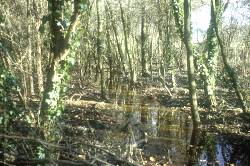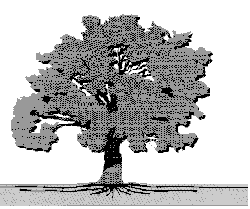 The archaeological value of wetlands
The archaeological value of wetlandsIn some parts of Britain, there is a renewed interest in the establishment and restoration of wet woodlands for their ecological value and possible use as a form of flood control. Waterlogged deposits have yielded many well-preserved archaeological remains and so the impact of woodland establishment on floodplains is of particular interest. However, one of the problems with many wetland areas is that while they may have a perceived archaeological potential, the exact occurrence or depth of burial is often unknown.
The largest potential impact could arise from new broadleaved woodland or SRC establishment on former floodplains where there is a greater risk for lowering the water table. Nevertheless, the effects of any existing site drainage must be considered. If a site has been extensively drained and under agriculture, then establishing tree species may have little additional impact as the upper 1 – 2 m of soil may have already lost any archaeological material present. For wet woodland, where water levels are actively maintained, and the site remains saturated throughout the year, there is likely to be little hydrological impact on any buried remains resulting from tree growth. However, such permanently flooded sites are uncommon.
Physical damage to buried archaeological evidence from tree roots could also potentially be an issue, but high water tables would produce a very shallow rooting system:

The management for small wood products (from coppice, pollards etc) would also reduce the need for large structural supporting roots. Under such management and environmental conditions, unless the archaeological evidence is very close to the soil surface, any rooting impacts are likely to be minimal. Archaeological damage from forest operations would also be unlikely on very wet sites, as vehicular trafficking may be inhibited. One slightly dryer, seasonally waterlogged sites, there is a potential risk of soil damage and rutting. This risk can be minimised if soil conservation guidelines are followed.
The degree of water saturation within a soil and the depth of burial, both influence archaeological preservation (especially organic based materials such as leather and wood). A shallow water table also reduces the maximum rooting depth of a tree. However, even on drained soils, tree roots will not descend indefinitely in pursuit of water and a maximum depth will be reached beyond which they can not extend.
Due to the diverse nature of archaeological evidence, its burial depth, the physical and chemical properties of wetland deposits, site hydrology, previous land use and the current or proposed type of woodland, each site needs to be assessed and managed on its own merits. However, any action which reduces either the water table or burial depth is likely to increase the risks of loss to any archaeological (especially organic based) evidence present.